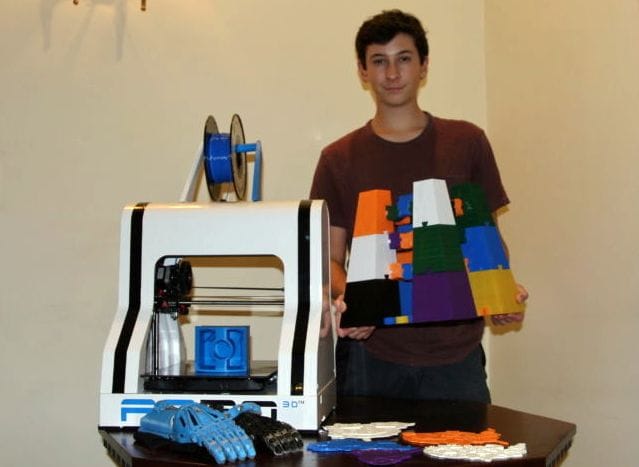![Hope3D’s Sam Suchin [Source: The Pollination Project]](https://fabbaloo.com/wp-content/uploads/2020/05/image-asset_img_5eb0a633ef38e.jpg)
A new non-profit venture hopes to unleash community 3D printing to power impactful initiatives.
Hope3D is a project started by student Sam Suchin, and it offers a straightforward proposal that depends on the altruism of participants. Hope3D will select what it considers a worthy project, and then leverage a network of community 3D printer operators to produce the parts required to complete the project.
Hope3D explains:
“Hope3D utilizes home consumer 3D Printing to crowd-source projects that improve our world. We wish to assemble a community of makers equipped with 3D printers that will fabricate parts for our various initiatives.”
Large objects are near impossible to 3D print with a single device due to the slow speed and small build volumes inherent in this type of equipment. Even the largest commonly available 3D printers have small build volumes. Thus larger projects are rarely, if ever, done.
Two technically similar projects that we’ve covered in the past are a 3D printed kayak and the famous 3D printed “George Crowdsourcington”, a 3D printed bust of George Washington.
Both of these projects attempted to produce larger objects by breaking the model down into small printable pieces. While the kayak was 3D printed over a lengthy period by a single operator, the Washington bust was crowdsourced: pieces were farmed out to individuals willing to lend a hand by printing out a piece or two.
If making one piece takes, say, two hours, a hundred-piece object would take over a week to complete. Or only two hours if done by a hundred 3D printers.
That’s the essence of Hope3D: to leverage idle 3D printers (and filament) to produce a small physical contribution. These were assembled together – hence the checkerboard appearance of the projects – to complete the final object. This is much like George Crowdsourcington, but with an ongoing list of worthy projects.
Suchin has selected the first project to be an artificial coral reef. “Project Reef” is described as:
“This project aims to produce a massive crowd-sourced artificial coral reef that will surmount the habitual approaches that are detrimental to the environment. Crowd-sourcing parts allows us to implement an artificial reef that would cost thousands for a fraction of the price. PLA material is a bio-friendly alternative to the harmful substances that are submerged into the ocean from common artificial reefs. Hope3D has designed an artifical reef that enables easy implementation, versatile application, and produces great results.”
A subsequent project appears to be “Project Vision”, which will “fabricate devices for the visually impaired”.
The project has just launched and is supported by several 3D print companies, including Robo3D (whose equipment appears in the image at top), eSun, MakeAnything, Direct Dimensions, re:3D, and the Pollination project, who awarded the initiative a cash grant to help spur it forward.
We believe this is a worthy initiative and one that can easily be supported by the hundreds of thousands of desktop 3D printers now installed around the world. Surely many of these can contribute a part or two to a project now and then.
I also call on the other 3D print companies to consider supporting this venture, as I know many would appreciate the work being undertaken.
Via Hope3D and The Pollination Project











